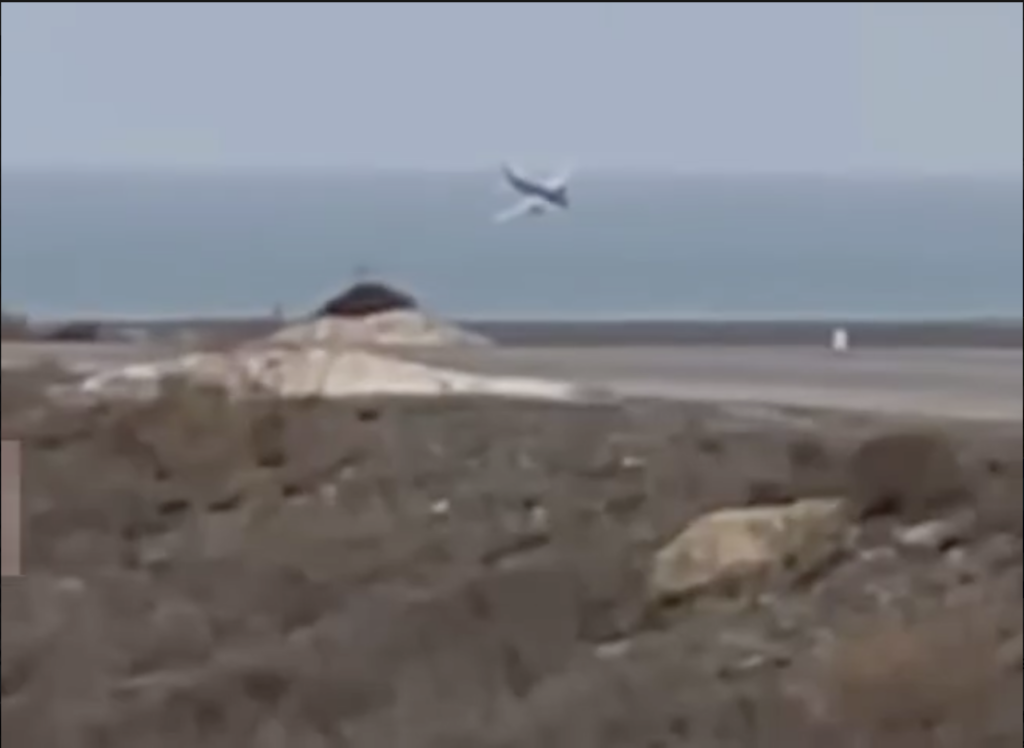Video evidence points to Russian air defense in Azeri passenger plane crash that killed 38
Holes in the aircraft's tail section, combined with flight recorder data, suggests the Baku-Grozny flight may have been hit by Russian anti-aircraft fire, while attempting to land in an area during a drone attack that was allegedly intercepted by Pantsir missile systems.


Head of the Ukrainian Center for Countering Disinformation Andriy Kovalenko blamed Russia for the Azerbaijani Airlines passenger plane crash that happened in Kazakhstan on 25 December.
In the morning of 25 December, drones attacked military facilities in Chechnya, a republic of Russia. In Grozny, a capital of Chechnya where the plane was heading, local reports indicated 4-5 explosions near the 2nd Regiment facility, with blasts heard in surrounding areas.
“Russia should have closed the airspace over Grozny but didn’t do so. The plane was damaged by the Russians and was sent to Kazakhstan, instead of making an emergency landing in Grozny and saving people’s lives,” Kovalenko wrote on his Telegram.
A passenger aircraft operated by Azerbaijan Airlines crashed near Aktau, Kazakhstan, resulting in 38 fatalities among its 67 passengers and crew. The Embraer 190 aircraft, operating a flight from Baku, Azerbaijan, to Grozny, Russia, went down after attempting an emergency landing.
Among the people on board, 42 were citizens of Azerbaijan, 16 of Russia, 6 of Kazakhstan, and 3 of Kyrgyzstan. 38 people died and 29 people from the tail of the plane survived the crash, according to Kazakh news media.
Multiple versions of events have emerged. The official preliminary report suggests a bird strike led to engine problems, prompting the crew to request an emergency landing. The pilot also reported that the plane had collided with a flock of birds. Then the plane’s control and hydraulics began to fail.
However, video evidence has surfaced suggesting alternative scenarios. Holes in the tail section suggests that the plane could have crashed due to damage by Russian air defense systems.
Russian Telegram channel VChK-OGPU reported to have obtained a complete transcript of communications between the Baku-Grozny flight crew and Grozny air traffic control.
The transcript indicates that initial problems began at 07:36 a.m. when the aircraft first contacted Grozny control. The aircraft attempted to land in Grozny twice but was denied permission due to ongoing drone attacks in the area.
Multiple landing attempts were complicated by GPS failures and loss of radar contact, which coincided with active anti-drone jamming systems in the area.
At 07:53 and 07:55, the aircraft experienced near-complete systems shutdown. The crew reported inability to use area navigation or other navigation capabilities, while ground control simultaneously lost radar contact with the aircraft.
After several unsuccessful landing attempts, a crucial sequence of events unfolded between 08:10 and 08:11:50, marked by radio silence. Instead of completing the planned landing on runway 26 in Grozny, the crew announced a change of course to Baku.
At 08:12, the aircraft reported loss of both GPS sensors. The situation deteriorated rapidly by 08:16 when the crew made a critical report: “We’ve lost control, bird strike in the cockpit,” according to the transcript.
VChK-OGPU suggests this perceived bird strike may have actually been an explosion and impact from fragmenting elements near the aircraft. According to investigations circulating online, this explosion was actually a missile fired from a Pantsir defending against drone attacks.

 /1. Russian air defense most likely caused the crash of an Embraer 190 passenger plane during UAV attack on Chechnya:
/1. Russian air defense most likely caused the crash of an Embraer 190 passenger plane during UAV attack on Chechnya:


